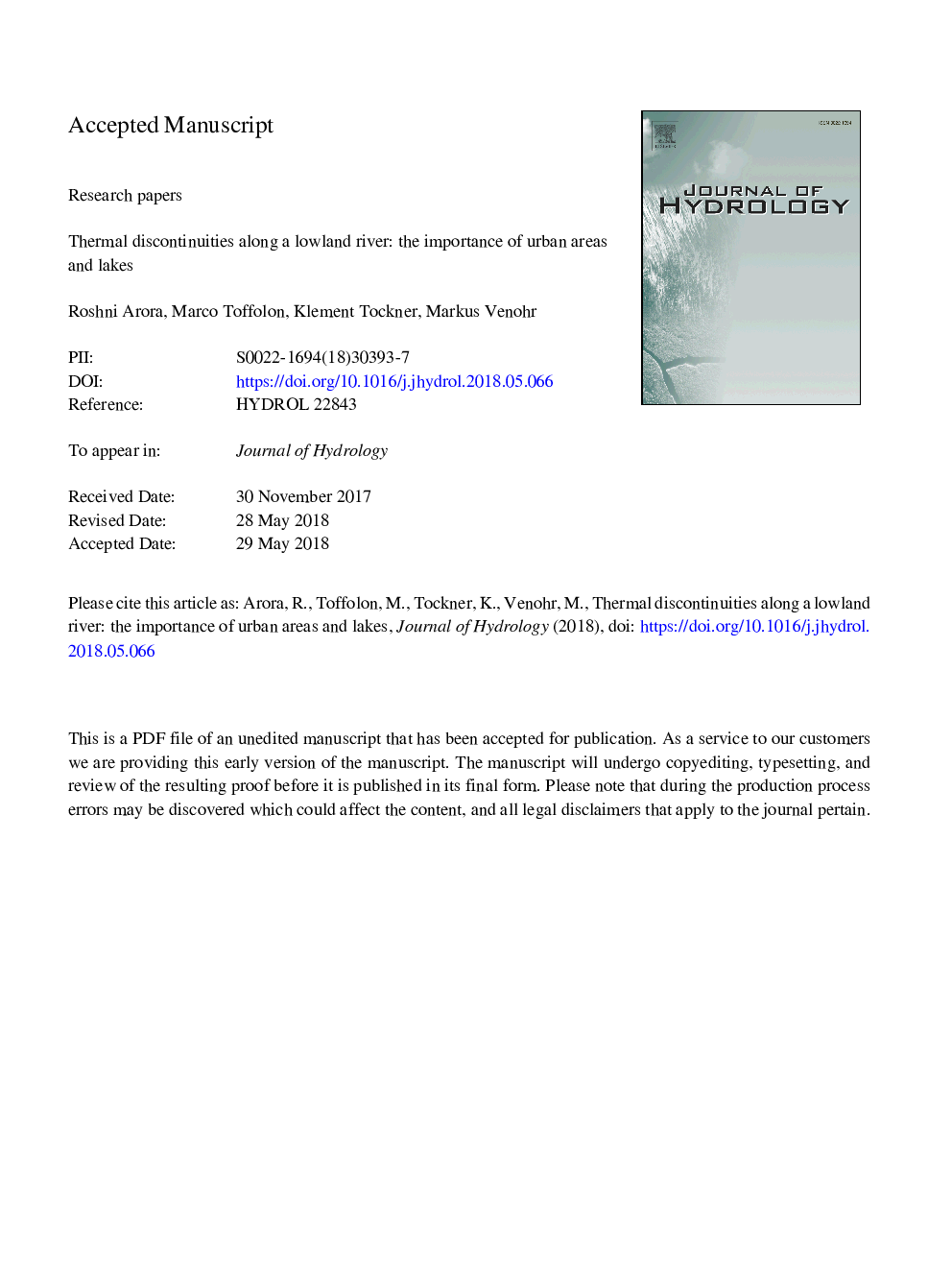| کد مقاله | کد نشریه | سال انتشار | مقاله انگلیسی | نسخه تمام متن |
|---|---|---|---|---|
| 8894512 | 1629890 | 2018 | 46 صفحه PDF | دانلود رایگان |
عنوان انگلیسی مقاله ISI
Thermal discontinuities along a lowland river: The importance of urban areas and lakes
ترجمه فارسی عنوان
اختلالات حرارتی در امتداد رودخانه مقدس: اهمیت مناطق شهری و دریاچه
دانلود مقاله + سفارش ترجمه
دانلود مقاله ISI انگلیسی
رایگان برای ایرانیان
کلمات کلیدی
موضوعات مرتبط
مهندسی و علوم پایه
علوم زمین و سیارات
فرآیندهای سطح زمین
چکیده انگلیسی
Despite increasing knowledge on the spatio-temporal dynamics of river temperature, a master water quality variable, it remains a challenge to identify the landscape variables influencing thermal heterogeneity along entire river courses. The present study investigated the spatial heterogeneity of stream temperature (ST), and the role of landscape variables, at 20 locations along the 195â¯km course of the intensively managed lowland River Spree (NE Germany) over a period of nine months. Along the river, four distinct thermal sections were identified, created by thermal discontinuities induced by lakes and an urban area. Three approaches, namely heat budget modelling (estimating the unresolved residual heat flux), both in Eulerian and Lagrangian form, semi-empirical air2stream modelling, and statistical correlations were applied to quantify the observed thermal heterogeneity and the role of climatic (air temperature) and landscape variables (land use, lakes, stream azimuth). Urban areas and lakes were identified as heat sources (in summer), which induced ST discontinuities at different time scales (daily, monthly and during the entire study period). Statistical correlations showed that heat inputs and ST increased with increasing urban area and decreased with distance from lakes. Furthermore, comparison of observed STs and those simulated via the Lagrangian model revealed that heat advection was the dominant thermal process in a lake-influenced section and persisted over a distance of up to 20â¯km. Simulations showed that this effect could not be significantly diminished even by complete riparian shading along the section, as the sub-daily ST reduced by an average of only 1.5â¯Â°C. Hence, plantation of riparian buffers should be complemented with additional mitigation measures such as improving the groundwater table recharge, managing the temperature of urban discharges, to mitigate climate change impacts on ST.
ناشر
Database: Elsevier - ScienceDirect (ساینس دایرکت)
Journal: Journal of Hydrology - Volume 564, September 2018, Pages 811-823
Journal: Journal of Hydrology - Volume 564, September 2018, Pages 811-823
نویسندگان
Roshni Arora, Marco Toffolon, Klement Tockner, Markus Venohr,
